Texas Tree Tips: July 2014
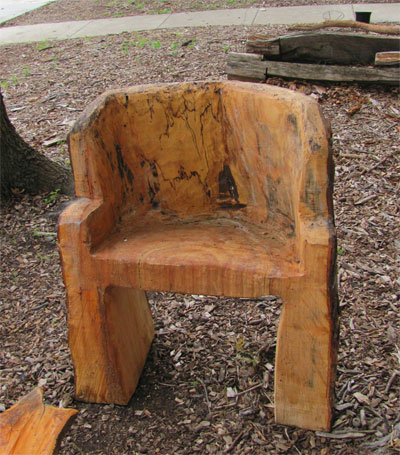
A felled tree remains in the garden as a carved chair. All photos by Steve Houser except where noted.
by Steve Houser
Logscaping
Although the term “logscaping” sounds like something created by beavers or our beloved squirrels, the concept is actually an effort to bring old ways back into more common use in today’s world. I know you are already thinking that a big pile of logs covering your yard would not be cool – but hear me out. The term refers to a basic repurposing of logs in an urban or rural setting for various sustainable uses rather than the logs just becoming firewood or being dumped in a landfill. Wood or logs from lost trees can be used for many different purposes. A million satisfied beavers and squirrels just can`t be wrong.
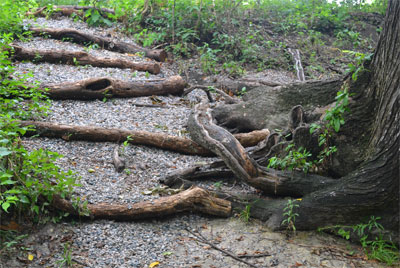
Bois d‘arc logs serve as step risers. Photo by Bill Seaman.
Logs can be used to reduce soil erosion, create plant stands or outdoor furniture, used as bed borders, and create artwork, among many other uses. When a tree must come down, folks typically want it removed from the site. However, a tree is a precious natural resource that should be repurposed on the site at which it was grown whenever possible. Recycling logs and limbs also helps to reduce the transfer of damaging pathogens and insects from one site to another.
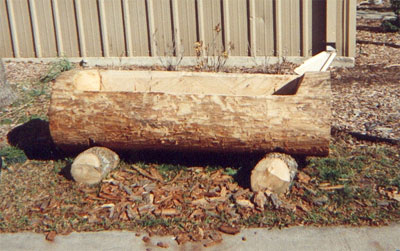
A “logscape” planter.
Leaves, twigs, limbs, and mulch, left to decay on the surface of the soil, will help to provide a healthier soil as well as healthier plants and trees, in return. Repurposing a tree also helps to conserve precious water resources by holding moisture in the soil and reducing soil exposure to direct sunlight, decreasing soil evaporation. My preference is to leave organic materials on a site to help restore soil health and avoid moving the material.
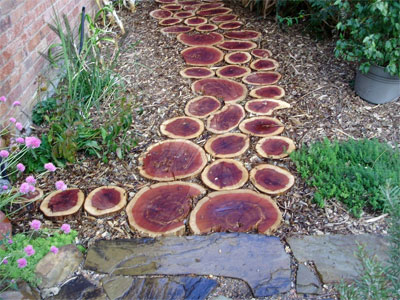
A walkway of red cedar “cookies.”
What to do with all the logs? In nature, from death comes life. Walk through any natural forest that contains large logs that have been left on the ground for a long period of time and carefully look underneath one. Watch for what crawls or slithers from underneath, and notice that the area under the log will be teaming with life. Roots of nearby trees congregate under the logs because they are sources of moisture and favorable environments. A few logs left on the soil surface along with other organic material is very beneficial, especially if you add a few tree cookie walks as well!!
One further note, too many logs or too much dead material can create a fire hazard, so logscape with moderation. (I felt this should be noted before I receive hate mail from Smokey the Bear).
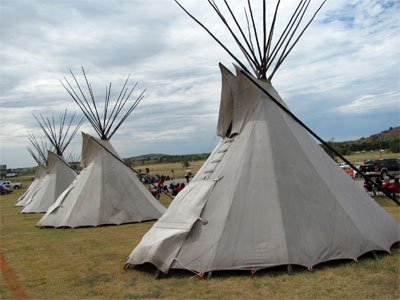
Native Americans are masters of logscaping.
Native Americans used logs and limbs for everything from teepee poles to totem poles, hand tools, and arrows. They were the original logscapers.
Although trees in rural areas can be used for all kinds of wood products, trees in urban settings will be difficult to remove in large sections due to the weight of larger logs and restricted spaces in which to remove them. Nevertheless, here are some cool ways that logs can be tree-cycled into better uses:
• Chairs or tables
• Steps up a trail
• Logscape planters
• Cookie walks
• Teepees
• Finally, using logs for soil retention catches topsoil runoff, which helps to diversify the habitat, the plants, and ultimately the wildlife that exists in an area.
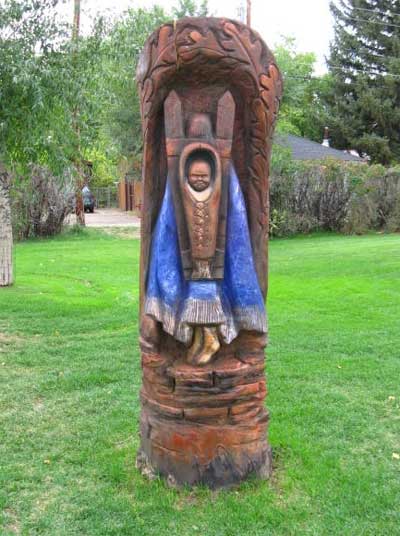
A tree lost in a South Texas storm became a carving story shared on the Internet.
Don’t trash it … tree-cycle it!!

